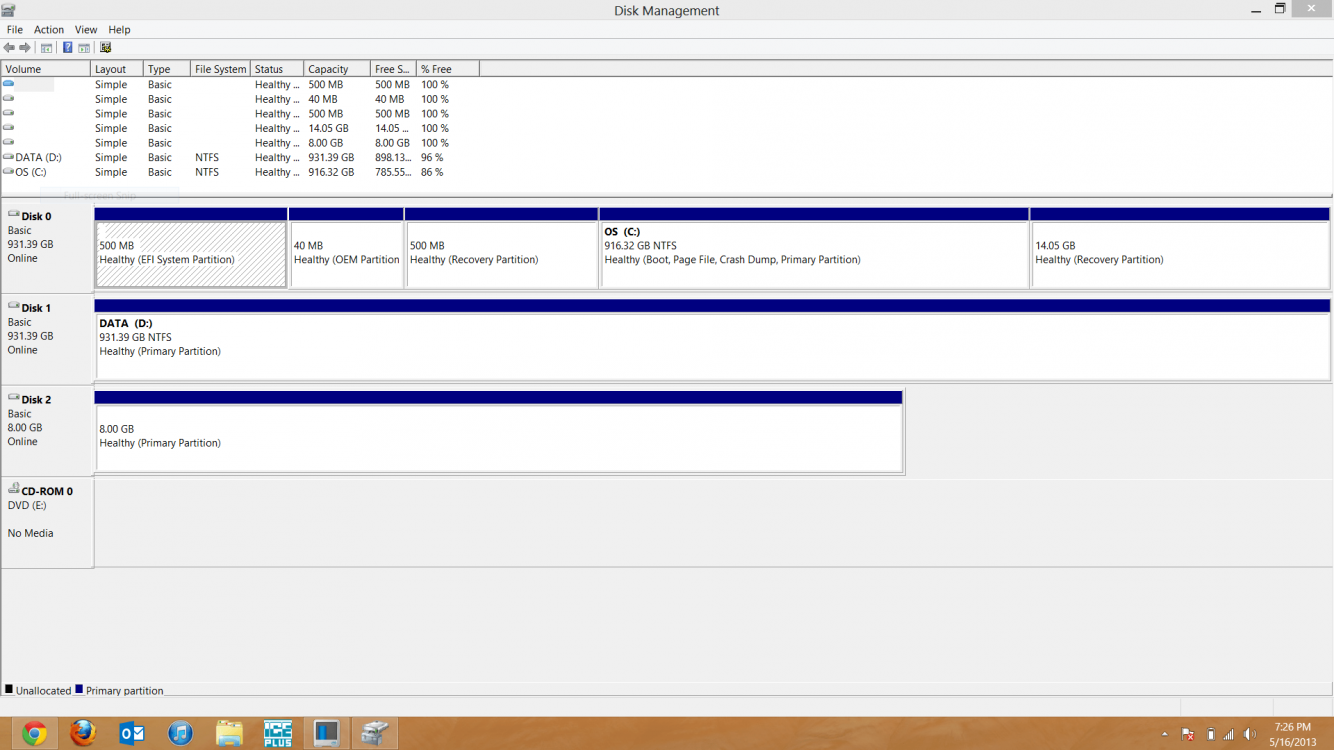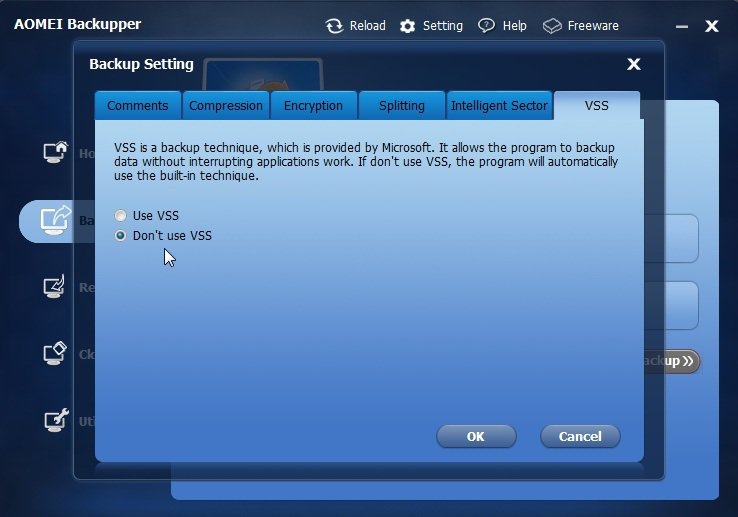TheDailyToker
New Member


- Messages
- 24
Hello all,
This is my first post on the forum, so please forgive me if this is in the wrong area.
I bought a new Dell Inspiron 17R SE 7720 a few weeks ago for work/school. This was my first Windows 8 machine, and I was excited to get everything up and running. One of the first things I like to do after I get all of my programs installed is a system image. I navigated to the Windows 7 File Recovery to start my system image. I began the image, and everything seemed to be going smoothly.
An hour later, I came back to see how it was doing. I was greeted with a "Failed Backup - Not enough storage" message, error code 0x81000033.
After a little research, I found out that this has to do with the OEM reserved partition that Dell is placing on their machines - apparently, they are not making it big enough for any backups or system images to be performed.
After the Windows 7 backup and image failed, I figured I'd give Acronis a try, but received the same error: Not enough space.
I called Dell, since I have "Premium Phone Support" for a short time after purchasing a new PC, but they weren't much help. I asked to send the laptop back to have the drive partitioned correctly, but they refused, and told me that this was how all of their systems were partitioned - undoubtedly a ploy to get users to purchase the Premium version of their backup and restore program.
So, I am left with what seems to be two options: 1) Clean install of Windows 8, and 2) Deleting the OEM reserved partition entirely.
Right now I am leaning toward the clean install, but I am worried about getting the mSATA SSD to function as a dedicated cache again (it utilizes Intel RapidStart and RapidStore) - I've heard horror stories about this.
Anyways, I was just hoping somebody might have some advice for me, as this makes me a bit nervous.
This is my first post on the forum, so please forgive me if this is in the wrong area.
I bought a new Dell Inspiron 17R SE 7720 a few weeks ago for work/school. This was my first Windows 8 machine, and I was excited to get everything up and running. One of the first things I like to do after I get all of my programs installed is a system image. I navigated to the Windows 7 File Recovery to start my system image. I began the image, and everything seemed to be going smoothly.
An hour later, I came back to see how it was doing. I was greeted with a "Failed Backup - Not enough storage" message, error code 0x81000033.
After a little research, I found out that this has to do with the OEM reserved partition that Dell is placing on their machines - apparently, they are not making it big enough for any backups or system images to be performed.
After the Windows 7 backup and image failed, I figured I'd give Acronis a try, but received the same error: Not enough space.
I called Dell, since I have "Premium Phone Support" for a short time after purchasing a new PC, but they weren't much help. I asked to send the laptop back to have the drive partitioned correctly, but they refused, and told me that this was how all of their systems were partitioned - undoubtedly a ploy to get users to purchase the Premium version of their backup and restore program.
So, I am left with what seems to be two options: 1) Clean install of Windows 8, and 2) Deleting the OEM reserved partition entirely.
Right now I am leaning toward the clean install, but I am worried about getting the mSATA SSD to function as a dedicated cache again (it utilizes Intel RapidStart and RapidStore) - I've heard horror stories about this.
Anyways, I was just hoping somebody might have some advice for me, as this makes me a bit nervous.
My Computer
System One
-
- OS
- Windows 8 Pro
- Computer type
- Laptop
- System Manufacturer/Model
- Dell 17R SE 7720
- CPU
- 3rd Gen Intel Core i7-3630QM 6MB cache, 3.4Ghz
- Memory
- 8GB DDR3
- Graphics Card(s)
- Nvidia GeForce GT 650M 2GB GDDR5
- Browser
- Chrome/Firefox
- Antivirus
- McAfee








